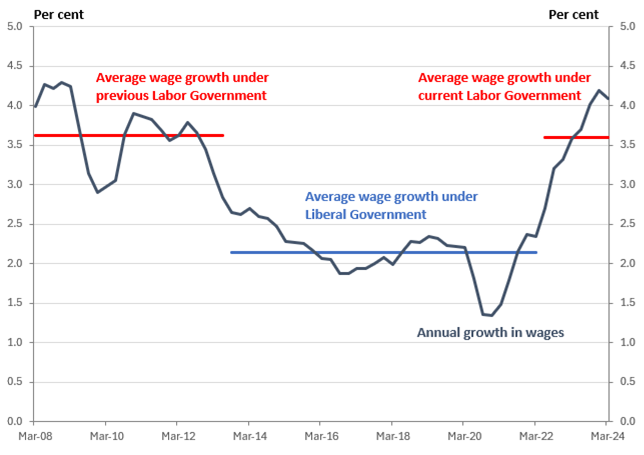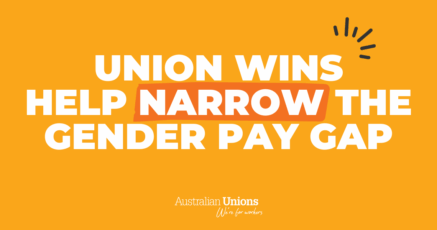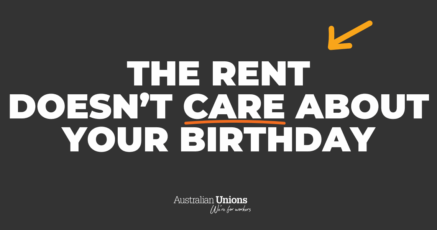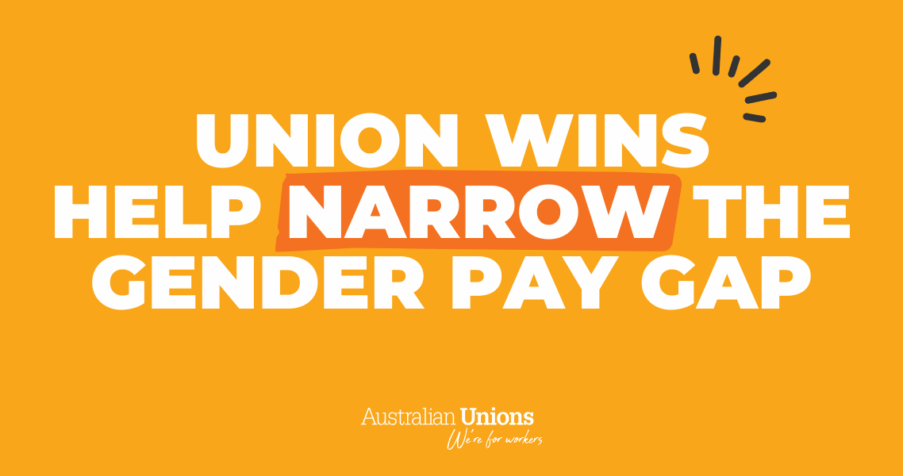With the cost-of-living continuing to be the number one issue for working Australians, it can feel like times have never been tougher.
But for a moment, consider a parallel universe where you’re struggling even further: with $4,700 less in your wallet over a year. Scary, right?
That’s the universe we’d be living in, if Australia had Peter Dutton as Prime Minister.
Numbers don’t lie
The Wage Price Index (WPI) is a way of measuring changes over time in wages and salaries for Australian jobs.
The higher the number (percentage), the better for workers; it means that wages and salaries have increased, on average, over that reported period of time. The Australian Bureau of Statistics (ABS) releases a WPI four times per year.
The latest WPI shows that average wage growth under the Albanese Labor government – who have been in power for just over two years – is at 3.8%.
In stark contrast, average annual wage growth under nearly a decade of Coalition governments from 2014 to 2022, was just 2.1%.
In other words: if annual wage growth had continued at the same low rate as under the last Coalition government, the average Australian worker’s wages or salary would be $4,700 less today.

The difference a government can make
So what has led to workers’ wages increasing so much in such a short time?
Well, thanks to the power of union members’ campaigning efforts and the Albanese government backing workers, in the last two years we’ve won the biggest changes to workers’ rights in this country in generations.
The new and improved rights have directly contributed to higher wage growth for workers, with union members using these newly-secured laws to secure better pay and conditions for thousands of workers.
Also in the last two years:
Significant award and minimum wage rises
Three significant wage rises under the Fair Work Commission’s Annual Wage Reviews mean that full-time award workers have received an average pay increase of $10,400 a year and a full-time minimum wage worker’s pay has increased by $7,451 a year.
Working women are some of the biggest winners in these wage rises, with those employed under awards seeing their average annual pay increase by $6,200 a year.
The union movement is the biggest voice advocating for workers in this yearly debate and the Albanese Government has also made submissions supporting positive increases.
Collective action wins better pay
The average pay rise for workers covered by new collective agreements reached 4.3% (a 15-year high*) and the number of workers covered by agreements is now 2.14 million, up by 480,000. That means more workers are getting higher pay.
*Data also shows that union-backed collective agreements (those which have been negotiated by union members) consistently deliver higher wages than non-union agreements.
Workers can’t afford to go backwards
Working people’s real wages have now gone up more in the last year under this Labor Government than under nearly ten years of the Coalition Government.
But in a way, this shouldn’t come as a suprise.
The Liberal Party have said themselves that low wages have always been a “deliberate design feature” of their policies and that real wage growth would be “the worst thing for Australians”.
Their proposals to turn secure jobs into casual jobs, repeal the right to disconnect and stand against minimum standards for gig workers would do just that: send workers’ wages and rights backwards.
Australians are already doing it so tough in this cost-of-living crisis. We literally can’t afford to be $4,700 worse off under Peter Dutton.






SHARE:
Working people would be $4,700 worse off if Dutton was PM